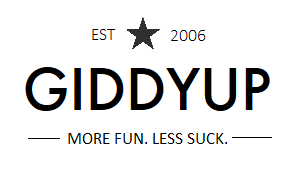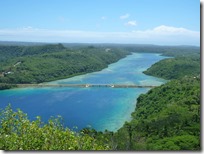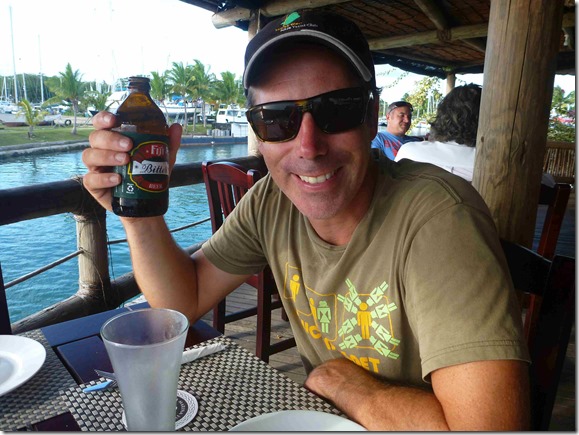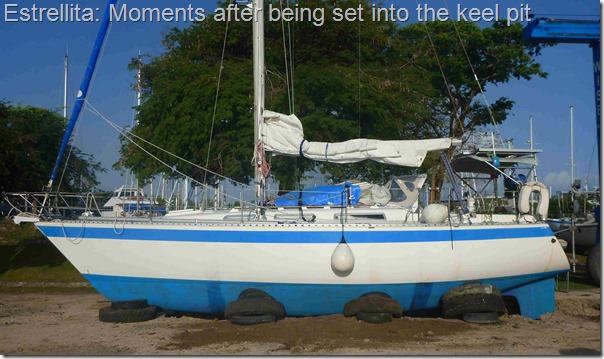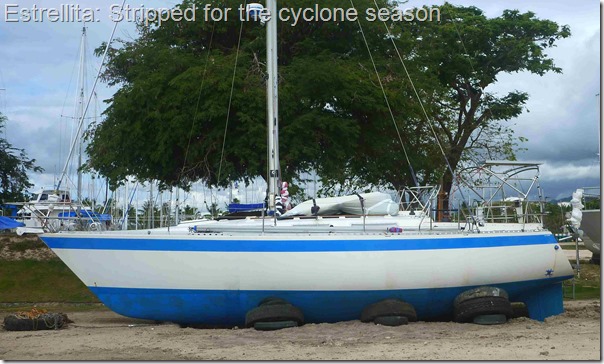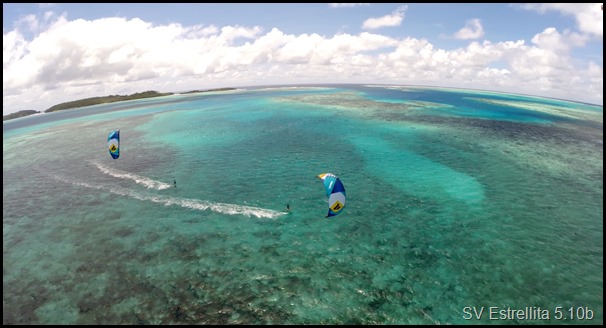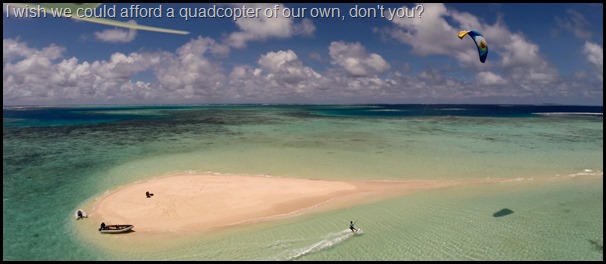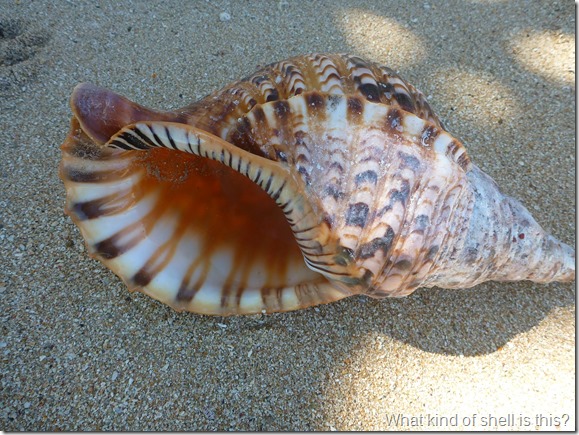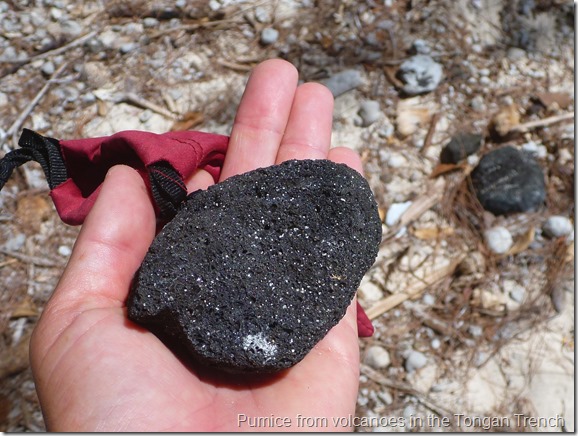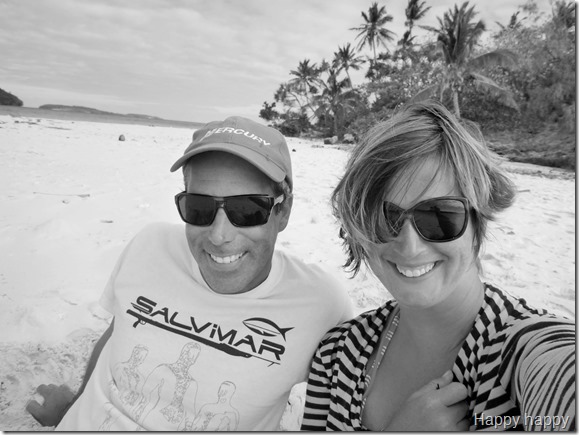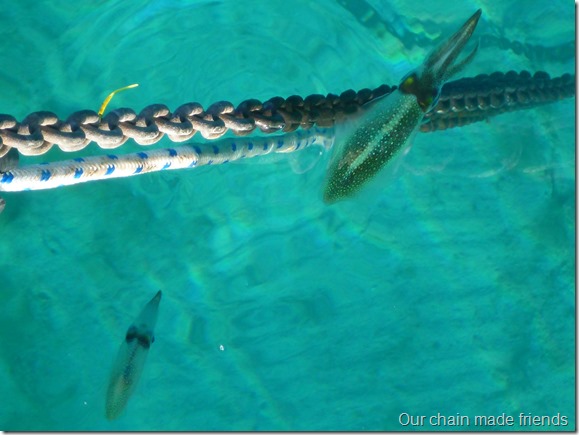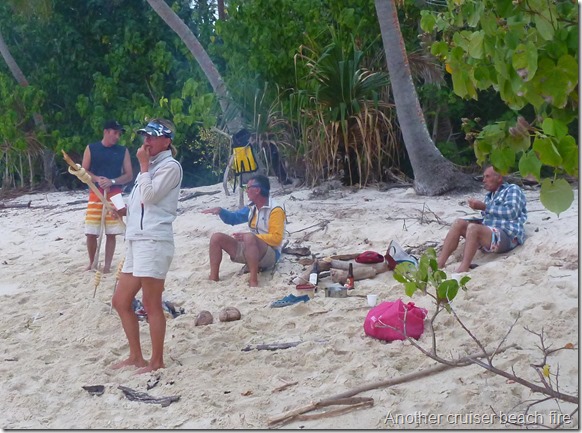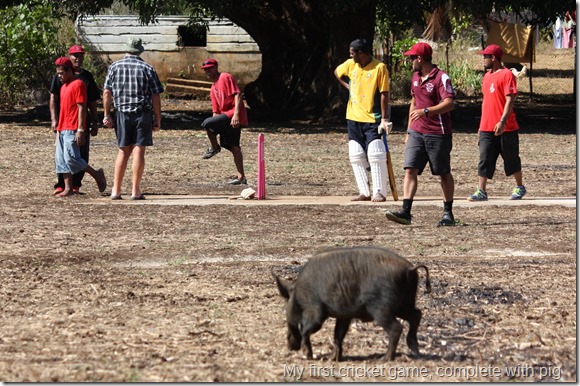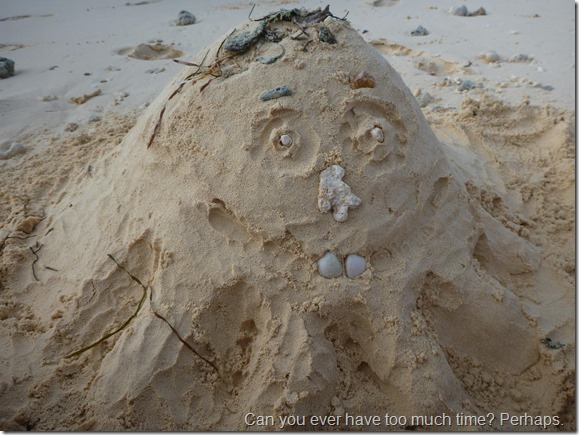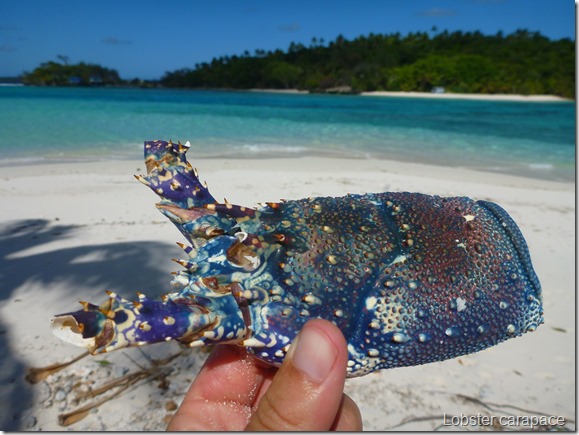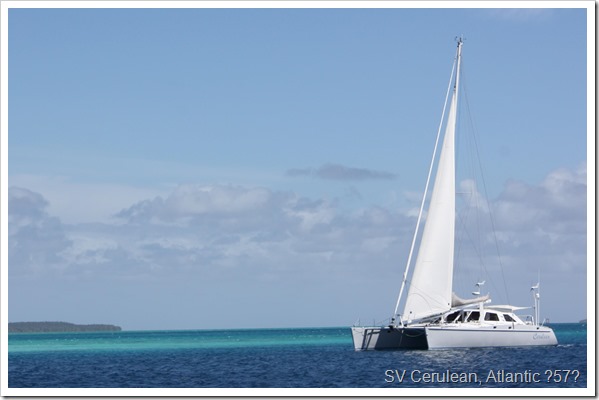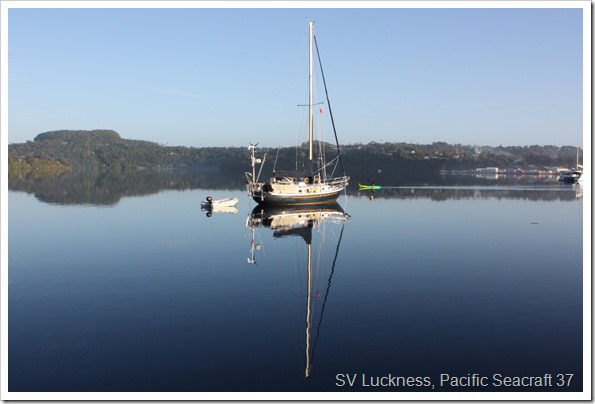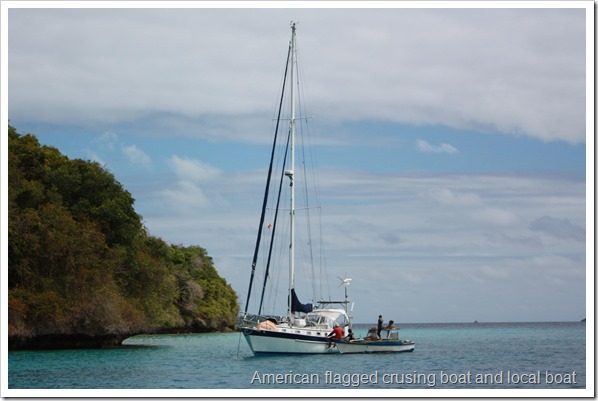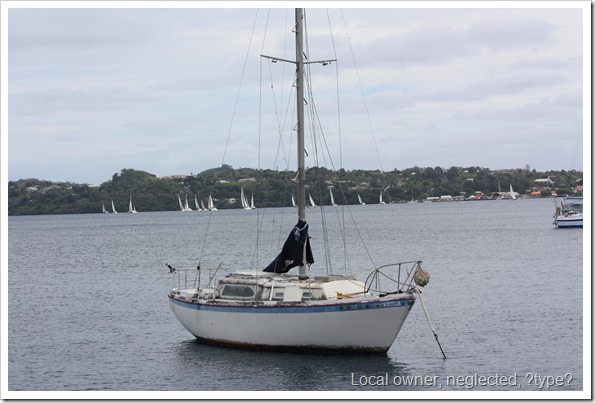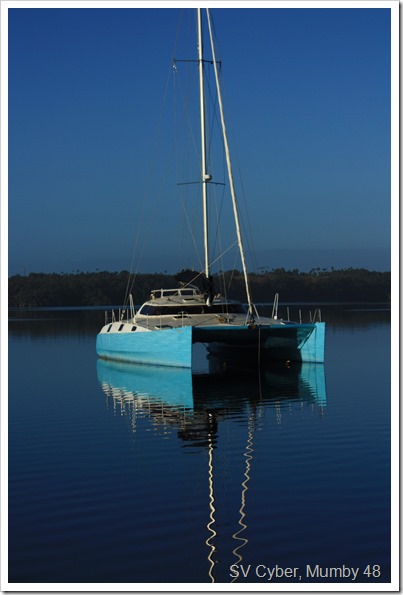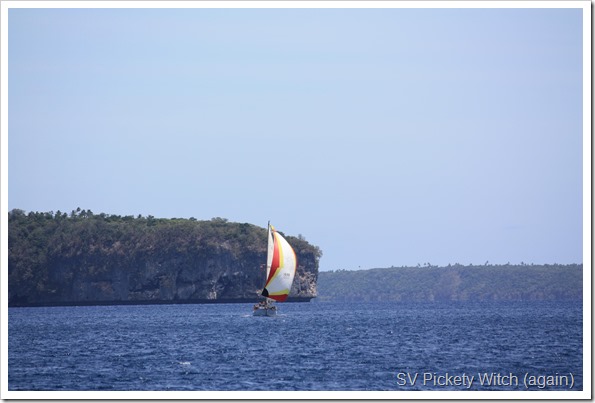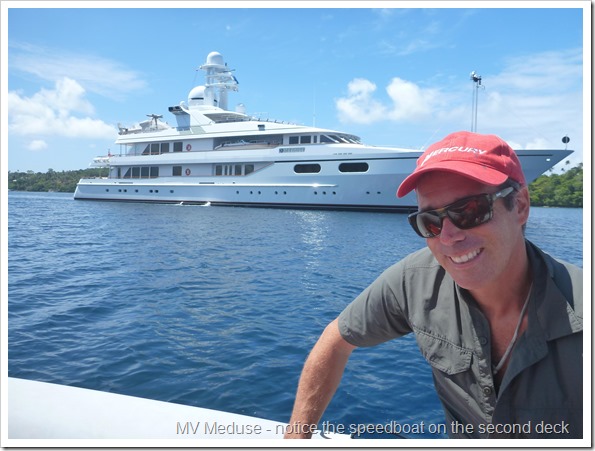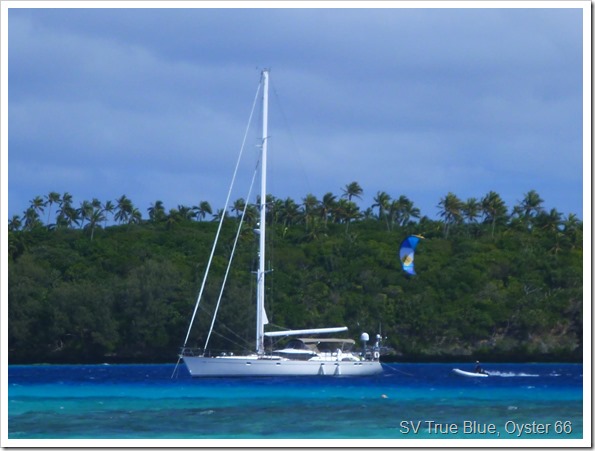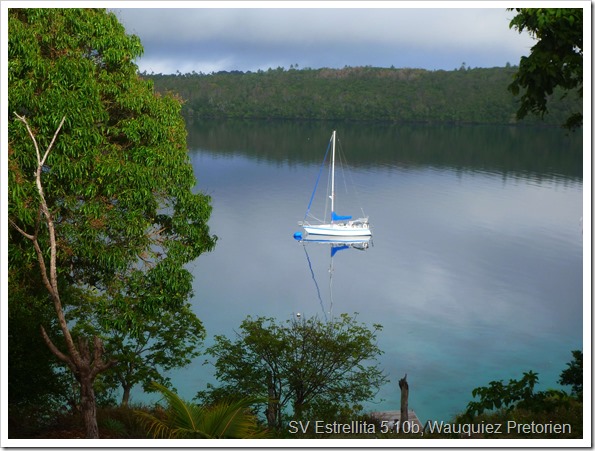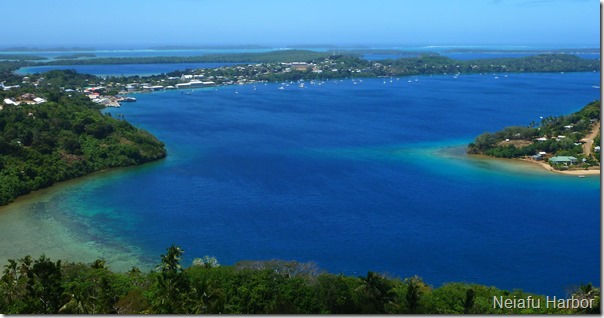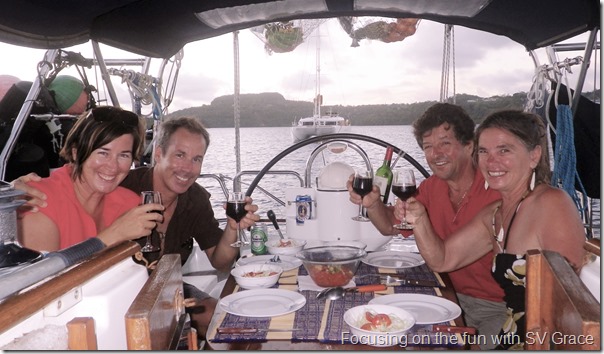There was this “award”…
There was this “award” going round cruising bloggers a few months ago (or maybe still?) which I have to admit I found both weird and fascinating. Weird because it was more like a chain email or pyramid scheme than a real award and fascinating because, let’s face it, I love the idea of interviews*. I cherry picked a few questions from two interviewers and even though I am making fun of the award I was still very flattered you guys thought of me.
Leah’s questions:
Why are you cruising wherever its is you’re cruising right now? How did that become a destination?
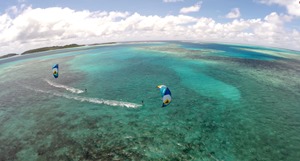 Well, it’s the South Pacific and I think that answers also how it became a destination! It’s amazing. It’s everything I wanted out of cruising. It’s a dream. I am making memories of a lifetime almost every day. I’m forgetting details of better places than I had ever visited before. It’s overwhelming and awesome. So, yeah, I like it here.
Well, it’s the South Pacific and I think that answers also how it became a destination! It’s amazing. It’s everything I wanted out of cruising. It’s a dream. I am making memories of a lifetime almost every day. I’m forgetting details of better places than I had ever visited before. It’s overwhelming and awesome. So, yeah, I like it here.
How’d you find your boat? Have you had other boats?
I (Livia) had never had another boat. Carol (my husband and supercruiser) had owned a 26’ Robert Perry design (Mirage). We decided to hire an expert to help us decide what boat to buy because we didn’t feel we knew enough. We knew so little that he encouraged us to visit a few boats while we were in Seattle visiting family over the holidays. The very first boat we stepped on that trip was the boat we bought and went cruising on (!) even though we went and looked at bunches of other boats.
If you weren’t sailing/cruising, what would you be doing?
Working to fund the next vagabonding adventure? Homesteading? Caravaning? More cruising?
 What’s your big-picture plan? Where do you hope to be in 5-10 years?
What’s your big-picture plan? Where do you hope to be in 5-10 years?
Still alive and healthy and active. Still searching working on keeping the fun-to-suck ratio in the appropriate balance. Perhaps seasonally working and seasonally traveling?
How do you keep yourself entertained on long night watches?
I do a long night watch from midnight until 5am. After trying a bunch of different standard watches we settled into our own idiosyncratic watch schedule. My usual plan is to make a cup a tea while “safe-ing the route”. This means I do the zoom in and zoom out double check on the electronic charts which we’ve already done prior to leaving on the intended route but is the responsibility of each watch person to double check on the actual route. I take my tea to the cockpit and zone out, absorbing the horizon, the sails, the weather, the windvane, for at least an hour. I then often grab a second tea, and a snack, and repeat that process. Somewhere around 2:30am when I need distraction, I alternate horizon sweeps with email writing. If propagation is good at that time of night I often do a weather download while uploading the emails I wrote. At this point, around 3:30, I go back to the cockpit full time with either: an audio podcast, an ebook, video podcast on the iPad. Once I’ve toughed out that hour until 4:30 or so, I come back down and start alternating horizon sweeps with settling down rituals – face washing, teeth brushing, whatever.
Dos Libras’s questions:
What is the one thing you wish more people knew about you? Don't be afraid to brag here... this is your chance!
I wish more people knew about the Newly Salted project and volunteered for Newly Salted interviews. Now that I am cruising it can take a while for me to respond to those interviews (which is why I put the Interview With A Cruiser project on intermission) but I really appreciate when people participate. If you are newly off the dock (< 2 years) or know someone who is, the deal is that you self-interview and I publish it. Consider it a donation to the dreamers out there.
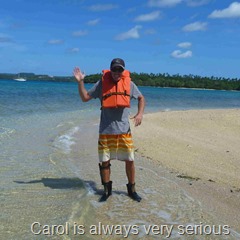 What would you say is your partner's greatest contribution to your success (current or future) as sailors/cruisers?
What would you say is your partner's greatest contribution to your success (current or future) as sailors/cruisers?
Carol has an amazing attitude and I didn’t realize how critical that is to cruising before we left the dock. Carol is ready to put on his game face and do dirty jobs at almost any time. I’m not saying he loves it, but he is ready to “pay the piper” for all of the good times and he does so with good humor and a good nature. This leads to some “leadership by example” in the sense that I see him gearing himself up to do something he didn’t necessarily want to do and I “man up” as well because I’m not willing to let him deal with it alone. He brings out the best in me during those situations. He is also really good with dealing with on the fly information gathering.
When will you/did you REALLY consider yourself to be a Cruiser? What does the word "Cruiser" mean to you?
I don’t really care what people call themselves. I was a cruiser the day I left the dock to start cruising. I think the main problem is when people who are cruising fail to indicate the limits of their expertise. If you have been in one region , doing one specific type of cruising, you can’t talk about whether “all cruisers need windvanes”. We have been in the South Pacific for a couple of years and we have only seen a few countries so really we know only a taste of the region. Lots of cruisers go on and on about things they really know nothing about just because they’ve been cruising a long time. Length of time cruising tells you very little about how much someone knows and it doesn’t tell you if what they know will be applicable to your cruise.
 What do you think will be the thing that ends your Cruising journey? Andy why?
What do you think will be the thing that ends your Cruising journey? Andy why?
Before we started cruising I didn’t know if we would stop when we ran out of money or when we were done with the hard work/discomfort aspects of cruising. I knew we wouldn’t get bored. Now I think we will run out of money before we don’t want to put up with the uncomfortable parts. I think this is because we’ve somehow managed to spend a fair amount of time off the boat every year. Whether it was for good reasons (visiting family, house/resort sitting), or bad reasons (repairing the boat), each time refreshed us. After a break we start missing the boat, missing the travel, and we come back with refreshed emotional reserves to deal with problems.
What size boat do you/will you cruise on? And if money were no object... would you buy a bigger one?
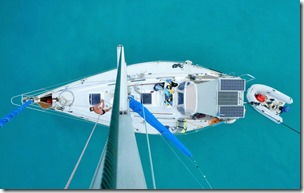 We cruise on a 30+ year old, 35 foot monohull. In our price range, we wouldn’t change boats. We have a solid boat we can take almost anywhere in the world (ice would make us nervous).
We cruise on a 30+ year old, 35 foot monohull. In our price range, we wouldn’t change boats. We have a solid boat we can take almost anywhere in the world (ice would make us nervous).
If money were no object we would be on a performance catamaran (think Atlantic or Outre-mer, not Lagoon or Fountaine Pajot). The additional space would be great and appreciated (particularly for our toy collection – kites etc) but really we would switch for the fun of sailing that fast, between anchorages sailing well in very light air and making fast passages.
*I loved creating the Interview With A Cruiser Project. Although on intermission, the IWAC still gets a lot of regular traffic and I love the idea that it remains standing as a free and open resource. And, admittedly sporadically, I am still publishing Newly Salted interviews.
Kudos to Gill
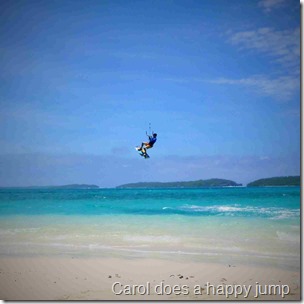 I don’t know if you remember this post about our favorite sailing gloves?
I don’t know if you remember this post about our favorite sailing gloves?
A reader notified us (thank you!) that Gill had reportedly had problems with some of their leather, had switched leather, and would replace our gloves. As cruisers far from North America we hadn’t tried contacting the company to send our gloves back, deciding it would be a hassle.
After contacting Gill, we had new gloves shipped to our N American address, no problems.
Kudos to Gill.
The Tongan Tale of the Bare Bottom
Have you ever mooned someone at night and had them confuse the sight of the starlight reflecting off your arse for the rising sun? No? Well, if so, you could be part of an island legend.
I’m not kidding. I’m laughing, but not kidding.
Imagine our surprise when we read the tourism sign at the bottom of the Mount Talau hike in the Nieafu, Vava’u, Tonga region and reached this quote:
The summit had nice view point balconies and picnic tables, unfortunately strewn with trash which looked like local teens.
The views at the top were very nice but how can they beat the story? I’m still hoping that someday they will erect a statue of Tafakula’s heroic and inspired moment.
Liquid Motivation: Fijian Brews
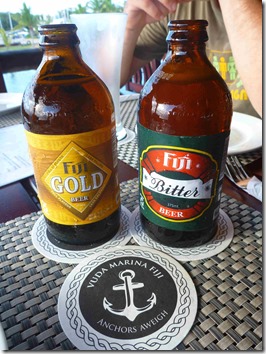 We saved Lauren’s donation so that we could use it to purchase our very first round of Fijian beers.
We saved Lauren’s donation so that we could use it to purchase our very first round of Fijian beers.
They weren’t microbrews (oh, how we crave a good one) but they were cold, they were frosty, and they were definitely better than Hinanos. And they went down smoothly after our passage from Tonga to Fiji, in a cute waterfront bar overlooking the entrance to Vuda Point Marina where we hauled out Estrellita a few days later.
Thank you, thank you Lauren and we wish you and your man could be here to join in but we are very glad that you are saving hard for your own vagabonding adventure.
Until we meet again!
Region Review: French Polynesia
 I’m trying to stick with my plan of doing some sort of region review as we exit a country or a region, but the reason it took me so long to write this is I struggled with whether is it possible to review a region this large in which we spent so much time?! It’s a country we fell in love with, that marked us permanently and with which we would return to with excitement someday.
I’m trying to stick with my plan of doing some sort of region review as we exit a country or a region, but the reason it took me so long to write this is I struggled with whether is it possible to review a region this large in which we spent so much time?! It’s a country we fell in love with, that marked us permanently and with which we would return to with excitement someday.First, to get a sense of how we traveled in this region, you can see where and how we spent our time there. Second, even though we spent more than 2 years in this single country there are tons of places we didn’t visit (e.g., we never visited the Australs). We can only rank what we saw.
Of the 4 archipelagos that we visited, Livia ranks her enjoyment in this order:
 Tuamotus – This is what I dreamed of when I was shivering in British Columbia through several winters of living aboard a boat we purchased to enjoy low latitudes. The water clarity, the underwater scenes, the wildness of being able to romp around on the motus playing survivor Estrellita, the crazy kiting – the stuff of my dreams. Fave spots: see below.
Tuamotus – This is what I dreamed of when I was shivering in British Columbia through several winters of living aboard a boat we purchased to enjoy low latitudes. The water clarity, the underwater scenes, the wildness of being able to romp around on the motus playing survivor Estrellita, the crazy kiting – the stuff of my dreams. Fave spots: see below. - Societies – I was very surprised at how much I enjoyed the Societies. More heavily populated and with more damaged coral, but as is often the case, there is a reason they became such a popular destination for tourists – they are stunningly beautiful – la
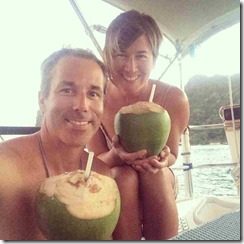 ndscapes and blue lagoons. And you can find your own semi-remote spots if you take the time to look for them. Perhaps also, after so long in isolated spots in the Tuamotus, the ability to have burgers and beer, the social aspects of the Societies, were a refreshing contrast. The three M’s of paradise: Maupiti, Mopelia & Moorea.
ndscapes and blue lagoons. And you can find your own semi-remote spots if you take the time to look for them. Perhaps also, after so long in isolated spots in the Tuamotus, the ability to have burgers and beer, the social aspects of the Societies, were a refreshing contrast. The three M’s of paradise: Maupiti, Mopelia & Moorea. - Gambiers – If there was more than just Mangareva to visit, the Gambiers would beat out the Societies for #2. I loved the Gambiers. Great underwater scene, great land play opportunities, amazing kiting and we met some fantastic tweeners to hang out with. If it weren’t for the slightly claustrophobic feeling of being stuck for part of hurricane season with the same set of sometimes gossipy, sometimes clique-ish, ex-pats-who-never-leave boats, I would have had an even better time. Favorite anchorages: Motu Tauna, Taravai’s West side.
- Marquesas – Don’t let the fact that the Marquesas are
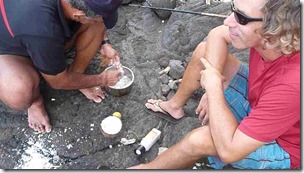 #4 make you think I didn’t enjoy them. Also, remember that we only spent 3 weeks in the Marquesas because, at that time, we only had 3 month visas for the entire country and having a short stay in an area is an easy way to have a false impression of the place. While the Marquesas were beautiful land-wise, they were missing the underwater play that I love. In a tight race between 4 fantastic spots, they are the 4th most interesting to me.
#4 make you think I didn’t enjoy them. Also, remember that we only spent 3 weeks in the Marquesas because, at that time, we only had 3 month visas for the entire country and having a short stay in an area is an easy way to have a false impression of the place. While the Marquesas were beautiful land-wise, they were missing the underwater play that I love. In a tight race between 4 fantastic spots, they are the 4th most interesting to me.
Livia’s Tuamotu Top 3. Now, the really hard part. Where were our favorite spots within our favorite archipelago? Again, there are lots of places we didn’t visit even though we spent the bulk of our time in the Tuamotus. I’m going to let us have a top 3 list for the Tuamotus which is hard enough. It is no surprise to me that my three favorite places are also the three places featured in our video Kiteboarding the Tuamotus although it isn’t just the kiting that makes these places special.
- Rangiroa – If you don’t have very much time Rangiroa is a bit harder to enjoy. While the village area has some great snorkeling, you have to get out of the village to see the beauty of this atoll and for reasons of time and weather, most people don’t. You need time to make the circuit of the 35nm long atoll because in the various corners of the atoll there are totally different scenes: village with great snorkeling, strange moonscape upraised reef, kiti
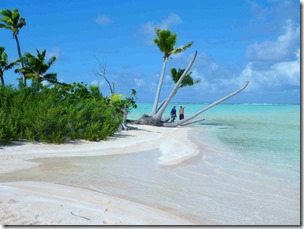 ng paradise as well as a bunch of other gorgeous nooks to tuck into. We were there a full month and didn’t get to go everywhere we wanted, in part because we spent two weeks kiting a mara’amu in the SE corner. Warning: It isn’t easy to safely travel the really big atolls such as Rangiroa and we got our asses kicked there.
ng paradise as well as a bunch of other gorgeous nooks to tuck into. We were there a full month and didn’t get to go everywhere we wanted, in part because we spent two weeks kiting a mara’amu in the SE corner. Warning: It isn’t easy to safely travel the really big atolls such as Rangiroa and we got our asses kicked there. - Fakarava – The South pass of Fakarava is stupendous. Diving through a cloud of slick shiny slightly twitchy missiles that are grey sharks, drift snorkeling with great coral and fish, and doing it all again and again, seeing different things each run, absorbing a little more of the scenery passing by at high speeds each time. Hirifa is an epic kite spot. We anchored in front of the restaurant at Hirifa and also just West of the restaurant on our own sandbar.The rest of Fakarava is quite nice too but the South pass is why it makes my #2. Scenic kiting also to the West of the S Pass although a little crunchy with coral bits.
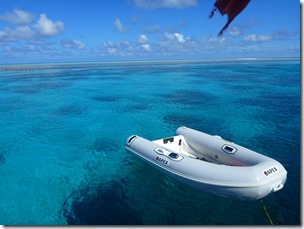 Tahanea
Tahanea
Carol picked Fakarava, Tahanea and added Toau which is isolated and spectacular in the South side (through the East facing pass) and also has the family at Anse Amyot to visit with in the North side – particularly fun when they aren’t overloaded with visitors.
Estrellita: Cyclone season 2014-2015 (Keel Pit, Vuda Point, Fiji)
Here is Estrellita’s home for the cyclone season, and you may have noticed she isn’t floating in the crystal clear blue waters of the Marshall Islands.
No one is certain (still) whether this year will be an official El Nino year or not, but with the increased west wind anomalies and the elevated risk of typhoon activity in the Marshall’s, the fact that the Marshall’s are atolls (and our own sucky experience with wind from the wrong side in an atoll), we decided to delay heading to the RMI until next year.
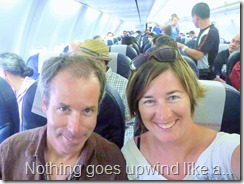 We debated staying in Tonga, and were on the waiting list for the keel pits in Fiji, but by mid-October had decided that we would head to New Zealand for the first time. After planning to be in NZ at the end of 2012 we figured it was about time! We had gone so far as sending in our arrival paperwork to NZ, in a 24 hour period we were notified that we had a spot in the keel pits in Fiji if we wanted it and we had a pretty fantastic opportunity to as caretakers as a resort in Tonga.
We debated staying in Tonga, and were on the waiting list for the keel pits in Fiji, but by mid-October had decided that we would head to New Zealand for the first time. After planning to be in NZ at the end of 2012 we figured it was about time! We had gone so far as sending in our arrival paperwork to NZ, in a 24 hour period we were notified that we had a spot in the keel pits in Fiji if we wanted it and we had a pretty fantastic opportunity to as caretakers as a resort in Tonga.
The decision: Ultimately, we decided to make the passage to Fiji, put Estrellita in the keel pit, prep her for leaving, and fly back to Tonga for some resort time near our favorite kiting location in Vava’u. And so we did…
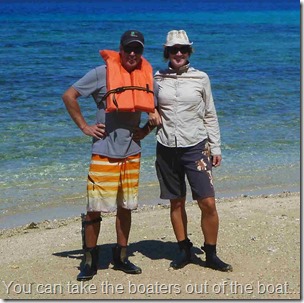 I’ll write more about the passage, our experience going into a keel pit, what we did to prep the boat, finish up my memories of Tonga by boat, and write about our land travel over the next few months.
I’ll write more about the passage, our experience going into a keel pit, what we did to prep the boat, finish up my memories of Tonga by boat, and write about our land travel over the next few months.
The plane plan: We aren’t certain where we will head after Tonga. NZ by plane is a real possibility but we are staying open to other opportunities (anyone have any flight passes from Nadi or Auckland?) but we’ll end up back in Fiji in time to do a month or so of work on the boat and splash in Fiji at the very start of the season to start exploring a new country.
Region Review: Fun Times in Tonga
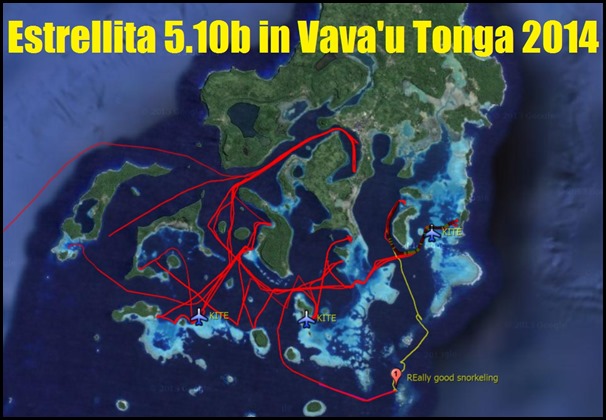
We spent just under 3 months cruising Tonga – 1 week in the Ha’apai group and the rest in Vava’u. It is a long time for a cruiser trying to make it from Mexico to NZ in one season but there is so much more we could have done if we had more time. We would have loved to go back the Ha’apai group, and to have seen Niautoputapu. Even in Vava’u, we could have spent a lot more days kiting at Kenutu before we got bored of that place (if ever).
As the months past, the network of connections we had made in the place grew. We made friends. We said goodbye to friends. We joined and left (or were left by) several fun gangs of people.
We had mixed reviews of Tonga from friends before arriving. We knew boats that had been here, been very disappointed and left immediately for Fiji. We knew boats who had been here, loved it and wished for more time. It was difficult to know what to expect because most people we heard from had only spent a month here, with at least a week in the main harbor, and had their eyes on their passage to New Zealand. Many of our friends saw some cool stuff here but they didn’t have much time to explore the nooks and crannies.
We had a fantastic time. Everyone has their own soft spots in their hearts for certain kinds of places, and Tonga didn’t capture us long term as French Polynesia did, but I can’t imagine us not having a good time here. Beautiful anchorages everywhere you go and heaps of them.
What we liked:
- KITE, KITE, KITE. Wow. Kenutu makes our top 5 list so far – totally. If you kite, and there is wind, go!
- Holy whales! If you arrive at the right time (it was mid-August for us this year), the mothers and their wee calves are in the shallow interior waters. Later in the year the whales stay in Vava’u but go to the deeper exterior waters where you are less likely to see them. We arrived at the peak of calving and it was amazing. Every time we went sailing we saw them. We saw them breaching and playing from our anchored vessel. Spectacular.
- White sand beaches.
- Amazing water colors.
- Loads of anchorages so even when it is busy you can find your own spot if you like. Generally great holding.
- Every place has a little surprise, something good and unexpected to find when you explore.
What was a minus:
- Underwater is a little underwhelming. You can find some live coral, you can find fish, except in the most sheltered bays the water is clear, but to our (admittedly jaded) experience, it is…only ok.
- Spear fishing is a bit of a no go unless you are willing to go far out and deep. No leisurely shooting in the anchorage in the coral fields.
- While there are lots of easy great anchorages, some of the places we wanted to explore were anchorages on shelves where swinging meant coming into the reef near the beach.
- Guidebooks were whacked (this isn’t really the fault of the place, but true).
- Channel 26 ;)
Thank you Tonga!
Video: Gravity Filling Our Propane Tank
Not an actual instructional video, but it would have been nice to have seen someone do it before we tried for the first time. We gravity filled our propane tank throughout French Polynesia and here we are doing it on Taravai Island (in Mangareva Atoll, Gambier Archipelago, French Polynesia).
Direct link to the video here.
Boats in Tonga
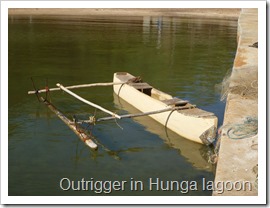 Like many boaters, I enjoy walking the docks in a new location and seeing all of the different boats, the different gear and different style owners bring to each boat. If you look through the regatta photos I posted you will see a fairly large selection of the fleet of cruising boats that we saw in Tonga this year but here are a few other vessels we snapped shots of on the water.
Like many boaters, I enjoy walking the docks in a new location and seeing all of the different boats, the different gear and different style owners bring to each boat. If you look through the regatta photos I posted you will see a fairly large selection of the fleet of cruising boats that we saw in Tonga this year but here are a few other vessels we snapped shots of on the water.
I don’t know the name or type of all of the boats in these photos but chime in if you do.
La Paz, Mexico --> Neiafu, Tonga
Being in Neiafu reminded us in many ways of being in La Paz. We had a great time in La Paz, and have a lot of great memories of good times with good friends there. Unfortunately, when we think of the town we also think of the bad apples in the ex-pat community. I don’t know if it was a fluke, or just our year, but we found that although most ex-pats living there were nice there were two annoying themes that kept repeating themselves: the cruiser-police who spread weird rumors and the angerballs.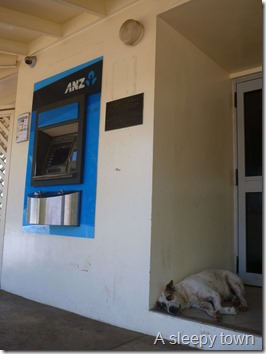 An example of the cruiser-police is the person who kept saying that if your Mexican courtesy flag was smaller than your ensign, you were insulting the Mexicans. The angerballs seem to restrict themselves to making rude and aggressive “anonymous” comments on the VHF. Both of these minorities left a bad taste in our mouths about La Paz, despite the fact that we had a great time there.
An example of the cruiser-police is the person who kept saying that if your Mexican courtesy flag was smaller than your ensign, you were insulting the Mexicans. The angerballs seem to restrict themselves to making rude and aggressive “anonymous” comments on the VHF. Both of these minorities left a bad taste in our mouths about La Paz, despite the fact that we had a great time there.
Apparently, we are capable of getting smarter ;)
Three months ago we rolled into Neiafu, which has a large ex-pat community, a regular cruiser net, and repeater stations on VHF channel 26 so both the net and cruiser hails can be heard even in the outlying anchorages. After a few hours of being on 26 and the next morning listening to one net, I realized that if we didn’t turn off that channel, we were going to have the same distaste for Neiafu. So we rolled our dial back to channel 16 and have spent the last 3 months enjoying the distance that our lack of participation puts between us and any drama. Now, we hear about the cruiser-police (e.g., trying to enforce a speed limit for dinghies of dubious legality that none of the Tongan drivers or dive boat follows) and the angerballs (e.g., the guy in the crowded mooring field who rows over and tells everyone to turn off their generators and dive compressors) as funny stories told to us by our friends over happy hour beers. Because we don’t have to hear either group directly, those stories are amusing to us, not frustrating.
We really like Neiafu which I’ll post about logbook style separately, and as you can hopefully see through our various posts, we have been having a world class time in Tonga.
Liquid Motivation: Date Night
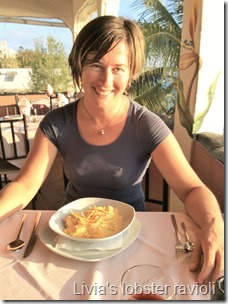 Thank you Martin. Thank you Jeff & Paula.
Thank you Martin. Thank you Jeff & Paula.
Thank you for funding a much needed “fancy dinner” in town. I remember reading Lin and Larry Pardey’s books and how Larry would take Lin out for dinner on their first night in port as a break from cooking. We both cook on board but when we can, we still enjoy the treat.
Compared to French Polynesia, eating out in Tonga is relatively inexpensive. It still isn’t necessarily cheap unless you search out the right local spots but it is much tastie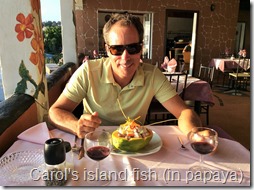 r and less expensive in general than we have been accustomed to.
r and less expensive in general than we have been accustomed to.
On a gorgeous sunny day we picked a spot overlooking the harbor of Neiafu, Vava’u, Kingdom of Tonga, ordered a glass of house wine, an appetizer and two tasty seafood dishes and had a slow meal while watching the sun go down. Martin, Jeff & Paula – you rock!
Is New Zealand Outside of the South Pacific Cyclone Zone? Yes, No and It Depends
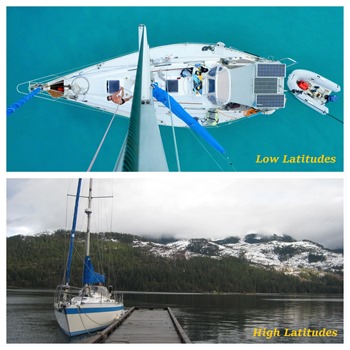 land in early November with plans to return to the tropics at the end of the cyclone season in April or May.
land in early November with plans to return to the tropics at the end of the cyclone season in April or May.As we sit here swinging at anchor in Tonga, at the end of October, boats are in transit, already transited or waiting for weather to sail to New Zealand.
One reason New Zealand is the default option is because it is commonly considered to be outside of the cyclone belt...but is it?
Yes. By definition, a cyclone* ceases to be a cyclone the moment that it leaves the tropics. This exit is called an extratropical transition and the former cyclone is now called “a storm of tropical origin”. In addition to the fact that a cyclone has exited the tropical arena and reaches colder waters, it often (but not always) loses other physical characteristics such as the eye that are necessary to be considered a named cyclone.
No. Even though this storm of tropical origin is no longer accurately labeled a cyclone, mariners and news outlets usually continue to use the official cyclone name as a former cyclone approaches New Zealand because, semantics aside, the strength of the wind in the storm of tropical origin can be as extreme as any tropical based cyclone. Over a 27 year period (1970-1997), Northland averaged one storm of tropical origin, with cyclone strength winds, per year. In April 1968, Tropical Cyclone Gisele re-intensified near Wellington producing winds gusting to 145 knots and blowing the roofs off of houses as far south as Christchurch on South Island. As recently as March 2014, Cyclone Lusi brought cyclone strength winds to North Island.
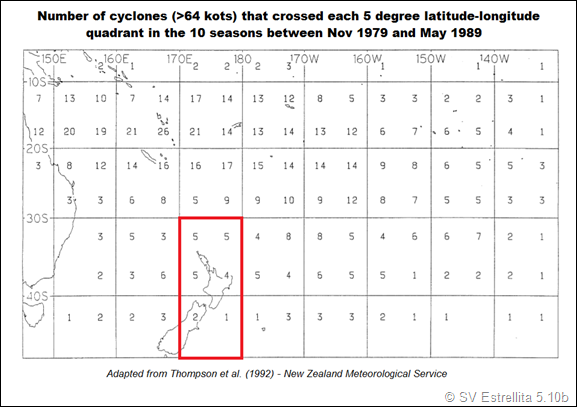
It Depends. These former cyclones, as they reach New Zealand, are usually rapidly weakening and for that reason don’t often reach very far down the North Island. While an average of one extratropical cyclone per year hit the area from Auckland north, the area south of there, between Auckland and the top of South Island averaged half as many. Still, extratropical storms of considerable strength, as described above, have reached all of the way down South Island. Strangely enough, although El Nino is generally associated with increased cyclonic activity, the strongest extratropical storms affect New Zealand when the ENSO cycle is neutral, not El Nino.
In Sum. While the risk is still relatively low, New Zealand is not accurately described as being unaffected by cyclone strength storms of tropical origin. New Zealand has been directly hit by substantially more extratropical storms of cyclone strength than areas of French Polynesia (i.e., the Marquesas and Gambiers). It is more accurate to say that New Zealand is a low risk border region – albeit one with well protected harbors, stout marinas and facilities for repairing any damages.
--------------------
*In this region a cyclone, among other characteristics, starts as a 10 min sustained wind speed of over 34 knots. 10 min sustained wind speeds of over 64 knots (a hurricane in other regions) are a Category 3 cyclone.
References:
